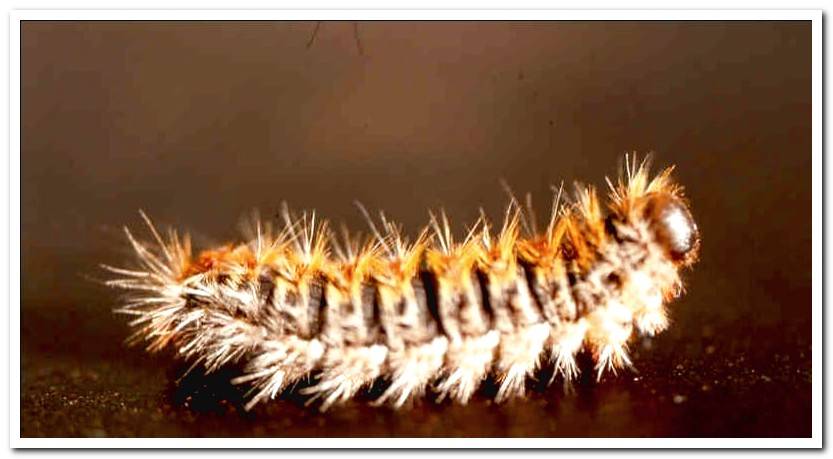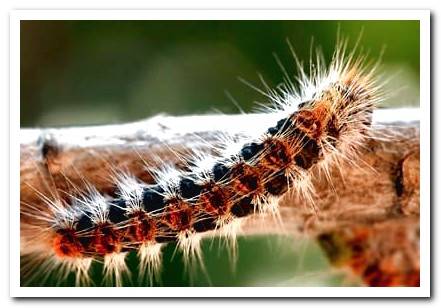
Surely on more than one occasion you have come across a good row of the famous pine processionary caterpillar, since it is very common throughout the Iberian Peninsula. It is potentially dangerous for people and certain animals, like dogs, due to its more than half a million “filaments” or “hairs” that cover it.
Knowing what its main dangers are, how to avoid them and how to act in the event of an accident, can make the difference between whether or not our dog lives. Therefore, spending a couple of minutes to know a little more about the processionary is a great investment. We will review the most important details that we must know.
Index of contents
- 1 The pine processionary caterpillar: what is it and where does it live?
- 2 Are there pine processionary caterpillars in parks and gardens of towns or cities?
- 3 What to do if there is contact with a pine processionary caterpillar?
- 4 How do I distinguish a processionary caterpillar from pine from other caterpillars?
- 5 Symptoms of pine processionary caterpillar toxin in dogs
The pine processionary caterpillar: what is it and where does it live?
According to the prestigious wikipediaIts scientific name is Thaumetopoea pityocampa and it belongs to the group of lepidoptera. It is a pest that mainly inhabits the forests of Southern Europe, although it is really widespread in all the tree parks in the country.
Although it is known as a pine processionary caterpillar, because it is the tree where the pest manifests itself, in reality it also inhabits other trees such as cedars or firs. The name of Caterpillar defines their larval state, since when they are adults they will transform into butterflies.

While it is a caterpillar, its body is covered with thousands and thousands of hairs that contain a toxin. Which can affect us even if we are not in direct contact with the caterpillars, since they can be easily transported by air.
They can irritate the eyes, nose, ears and throat in humans and cause serious allergic reactions. In dogs it is even more powerful and can cause death. Direct contact is much worse, since the mentioned symptoms can intensify much more.
Are there pine processionary caterpillars in parks and gardens of towns or cities?
Unfortunately yes, it is a very widespread pest, so much so that the strange thing is to find a pine forest or wooded area where they have never had processionaries. In any city or town we can find processionaries, we only need to know where to look for them.
It is between January and March when we must be more cautious since it is when they begin to generate some migratory movements. Generally in pines but also in other trees, we will be able to see their nests in the shape of white cotton candy. Both in the canopies and in the highest branches, on many occasions there are several processionary caterpillar nests in the same tree.
Contrary to what many people believe, the processionary caterpillar does not stay in its nest continuously, but it goes up and down the tree on multiple occasions, since it likes to bury itself in the ground.
If you appreciate a nest of processionaries in the area where you live, you must notify the city council so that they can eliminate it. Since it is a pest, not a welcome guest….
What to do if there is contact with a pine processionary caterpillar?
If by accident we have contact with one of these caterpillars, we should wash our hands with plenty of soap and water, avoiding touching other parts of our body. If we have had contact with any sensitive part such as eyes, ears, nose or mouth, we should immediately go to a health center. If we start to notice any serious allergic reaction, we will call an ambulance.
If our dog has direct contact with a processionary, his fate may be truly uncertain. To help you, we should immediately go to a veterinaryn, who will give you a fast acting corticosteroid treatment that creates convenient.
Only with proper medical treatment can you escape this situation unscathed, with any luck. There are dogs that have tried to lick a processionary, or eat it and have completely lost their tongues. Others have simply suffered from strong inflammation but with the help of corticosteroids they have been able to save it, or lose only a piece.
It is not something that can be left for another day, it is something very important. Getting the medication on time can save your life.
How do I distinguish a processionary caterpillar from pine from other caterpillars?
In the photos in this article you can see their appearance in the larva phase, which is when they are dangerous. Also their hairs, which can move through the air without problems. They have a typical caterpillar appearance but completely covered with rather whitish hairs. The caterpillars are usually black with some streaks or yellow shades, as you can see.
They usually move in a single file, so that they all follow the one in front of them. Hence the name of processionaries, since they are in procession. We will be able to see them near any park with trees between January and May, although especially when the heat begins (March-April).
If we see them, it is best to move away and move our dog away, even avoiding passing near them. And we will notify the city council so that they can eliminate them.
Symptoms of pine processionary caterpillar toxin in dogs
The symptoms will be very noticeable if our dog has direct contact with a pine processionary. They are very curious and sometimes they want to play with anything that moves on the ground … and without knowing it, they may have licked or eaten one.
If we appreciate any of the following symptoms and suspect that it may have had contact with a processional caterpillar, we should immediately go to a vet:
- Trouble breathing or swallowing
- Swelling of the tongue or part of the tongue
- Swelling of the mouth or lips
- Swelling of the head or fever
- Necrosis of the tongue or lips and inflammation
- Scratches excessively somewhere on your face and shows swelling
Telephone numbers of interest: Environmental areas where you can participate, in some of the most populated cities:
- Madrid: 915 881 000
- Barcelona: 93 444 51
28 - Bilbao: 944 20 42 00
- Seville: 902 45 99 54
- Valencia: 010
- Pamplona: 012
Did you like the article, did you find it useful? Help us keep the web going! : Give “Like” or Share it on social networks 🙂 Thank you!

